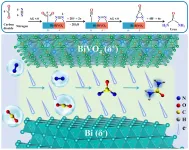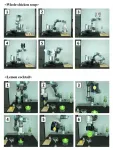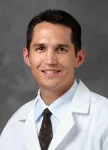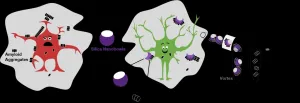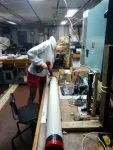"Stark warning": Combating ecosystem collapse from the tropics to the Antarctic
2021-02-26
(Press-News.org) Eminent scientists warn that key ecosystems around Australia and Antarctica are collapsing, and propose a three-step framework to combat irreversible global damage.
Their report, authored by 38 Australian, UK and US scientists from universities and government agencies, is published today in the international journal Global Change Biology. Researchers say I heralds a stark warning for ecosystem collapse worldwide, if action if not taken urgently.
Lead author, Dr Dana Bergstrom from the Australian Antarctic Division, said that the project emerged from a conference inspired by her ecological research in polar environments.
"I was seeing unbelievably rapid, widespread dieback in the alpine tundra of World Heritage-listed Macquarie Island and started wondering if this was happening elsewhere," Dr Bergstrom said.
"With my colleagues from the Australian Antarctic Division and the University of Queensland we organised a national conference and workshop on 'Ecological Surprises and Rapid Collapse of Ecosystems in a Changing World', with support from the Australian Academy of Sciences."
The resulting paper and extensive case studies examine the current state and recent trajectories of 19 marine and terrestrial ecosystems across all Australian states, spanning 58° of latitude from coral reefs to Antarctica. Findings include:
Ecosystem collapse (defined as potentially irreversible change to ecosystem structure, composition and function) is occurring now in 19 case studies. This conclusion is supported by empirical evidence, rather than modelled predictions.
No ecosystems have collapsed across their entire range, but for all case studies there is evidence of local collapse.
The 19 ecosystems include the Great Barrier Reef, mangroves in the Gulf of Carpentaria, the Mediterranean forests and woodlands, the arid zone of central Australia, Shark Bay seagrass beds in Western Australia, Great Southern Reef kelp forests, Gondwanan conifer forests of Tasmania, Mountain Ash forest in Victoria, and moss beds of East Antarctica.
Drivers of ecosystem collapse are pressures from global climate change and regional human impacts, categorised as chronic 'presses' (eg. changes in temperature and precipitation, land clearing) or acute 'pulses' (eg. heatwaves, storms, fires and pollution after storms).
Michael Depledge CBE, Emeritus Professor at the University of Exeter and former Chief Scientific Advisor to the Environment Agency of England and Wales, said the research had particular significance following the UK Government commissioned Dasgupta Review , which recently highlighted the catastrophic economic damage associated with biodiversity loss.
Professor Depledge said: "Our paper is a further wake-up call that shows ecosystems are in varying states of collapse from the tropics to Antarctica. These findings from Australia are a stark warning of what is happening everywhere, and will continue without urgent action. The implications for human health and wellbeing are serious. Fortunately, as we show, by raising awareness, and anticipating risks there is still time to take action to address these changes.
"Our paper will hopefully increase awareness that our ecosystems are collapsing around us. We can already observe the damaging consequences for the health and wellbeing of some communities and anticipate threats to others. Taking stronger action now will avoid heaping further misery on a global population that is already bearing the scars of the global pandemic".
The paper recommends a new '3As' framework to guide decision-making about actions to combat irreversible damage:
Awareness of the importance of the ecosystem and the need for its protection;
Anticipation of the risks from current and future pressures
Action on reducing the pressures to avoid or lessen their impacts
Example:
Protecting pencil pines from fire in the Southwest Tasmanian Wilderness World Heritage Area: by mapping vegetation values against fire sensitivity (to identify fire-prone Gondwanan conifer communities), maintaining an area specific awareness of the shifting causation of bushfires (increasing frequency of dry lightning strikes), and developing new action strategies to lessen the pressure of unregulated fire (installing sprinkler systems), conservation managers established and used Awareness and Anticipation to formulate positive Action.
The scientific team concluded that in the near future, even apparently resilient ecosystems are likely to suffer collapse as the intensity and frequency of pressures increase.
"Anticipating and preparing for future change is necessary for most ecosystems, unless we are willing to accept a high risk of loss," Dr Bergstrom said.
"Protecting the iconic ecosystems we have highlighted is not just for the animals and plants that live there. Our economic livelihoods, and therefore ultimately our survival, are intimately connected to the natural world."
INFORMATION:
About the University of Exeter Medical School
The University of Exeter Medical School is part of the University of Exeter's College of Medicine and Health. Our mission is to improve the health of the South West and beyond, through the development of high quality graduates and world-leading research that has international impact.
As part of a Russell Group university, we combine this world-class research with very high levels of student satisfaction. Exeter has over 19,000 students and is ranked 12th in The Times and Sunday Times Good University Guide 2020.
The University of Exeter Medical School's Medicine course is in the top 10 in the Complete University Guide 2020.
The College's Medical Imaging programme is ranked in the top 5 in the Guardian Guide 2020 and the Complete University Guide 2020.
The University of Exeter entered the world top 20 for Biomedical and Health Sciences in the CWTS Leiden Ranking 2019, based on the percentage of publications ranked in the top 10 per cent most cited.
https://medicine.exeter.ac.uk/
For further information:
Louise Vennells
Press and Media Manager
University of Exeter Medical School
+44 (0)1392 724927 or 07768 511866
l.vennells@exeter.ac.uk
ELSE PRESS RELEASES FROM THIS DATE:
2021-02-26
Converting both nitrogen (N2) and carbon dioxide (CO2) into value-added urea molecules via C-N coupling reaction is a promising method to solve the problem of excessive CO2 emissions.
Compared with huge energy consumption industrial processes, the electrochemical urea synthesis provides an appealing route under mild conditions. However, it still faces challenges of low catalytic activity and selectivity.
A research team led by Prof. ZHANG Guangjin from the Institute of Process Engineering (IPE) of the Chinese Academy of Sciences fabricated Bi-BiVO4 Mott-Schottky heterostructure catalysts for efficient urea synthesis at ambient conditions.
This work was published in Angewandte Chemie International ...
2021-02-26
The Korea Institute of Machinery and Materials (KIMM) successfully developed all-round gripper* technology, enabling robots to hold objects of various shapes and stiffnesses. With the new technology, a single gripper can be used to handle different objects such as screwdrivers, bulbs, and coffee pots, and even food with delicate surfaces such as tofu, strawberries, and raw chicken. It is expected to expand applications in contact-free services such as household chores, cooking, serving, packaging, and manufacturing.
*Gripper: A device that enables robots to hold and handle objects, ...
2021-02-26
Memphis, Tenn. (February 25, 2021) - Early diagnosis of Alzheimer's disease has been shown to reduce cost and improve patient outcomes, but current diagnostic approaches can be invasive and costly. A recent study, published in the Journal of Alzheimer's Disease, has found a novel way to identify a high potential for developing Alzheimer's disease before symptoms occur.
Ray Romano, PhD, RN, completed the research as part of his PhD in the Nursing Science Program at the University of Tennessee Health Science Center College of Graduate Health Sciences. Dr. Romano conducted the research through the joint laboratory of Associate ...
2021-02-26
DETROIT (February 25, 2021) - Researchers at Henry Ford Health System, as part of a national asthma collaborative, have identified a gene variant associated with childhood asthma that underscores the importance of including diverse patient populations in research studies.
The study is published in the print version of the American Journal of Respiratory and Critical Care Medicine.
For 14 years researchers have known that a casual variant for early onset asthma resides on chromosome 17, which holds one of the most highly replicated and significant genetic associations with asthma. Henry Ford researchers acknowledged they would not have identified it in this study ...
2021-02-26
ROCKVILLE, MD - Scientists are still a long way from being able to treat Alzheimer's Disease, in part because the protein aggregates that can become brain plaques, a hallmark of the disease, are hard to study. The plaques are caused by the amyloid beta protein, which gets misshapen and tangled in the brain. To study these protein aggregates in tissue samples, researchers often have to use techniques that can further disrupt them, making it difficult to figure out what's going on. But new research by Vrinda Sant, a graduate student, and Madhura Som, a recent PhD graduate, in the lab of Ratnesh Lal at the University of California, San Diego, provides a new technique for studying amyloid beta and could be useful in future Alzheimer's treatments. Sant and her colleagues will present their research ...
2021-02-26
Our use of social media, specifically our efforts to maximize "likes," follows a pattern of "reward learning," concludes a new study by an international team of scientists. Its findings, which appear in the journal Nature Communications, reveal parallels with the behavior of animals, such as rats, in seeking food rewards.
"These results establish that social media engagement follows basic, cross-species principles of reward learning," explains David Amodio, a professor at New York University and the University of Amsterdam and one of the paper's authors. "These findings may help us understand why social media comes to dominate daily life for many people and provide clues, borrowed from research on reward learning and addiction, to how troubling online engagement may ...
2021-02-26
Chemical engineering researchers have developed a new catalyst that significantly increases yield in styrene manufacturing, while simultaneously reducing energy use and greenhouse gas emissions.
"Styrene is a synthetic chemical that is used to make a variety of plastics, resins and other materials," says Fanxing Li, corresponding author of the work and Alcoa Professor of Chemical Engineering at North Carolina State University. "Because it is in such widespread use, we are pleased that we could develop a technology that is cost effective and will reduce the environmental impact of styrene manufacturing." Industry estimates ...
2021-02-26
The koala retrovirus (KoRV) is a virus which, like other retroviruses such as HIV, inserts itself into the DNA of an infected cell. At some point in the past 50,000 years, KoRV has infected the egg or sperm cells of koalas, leading to offspring that carry the retrovirus in every cell in their body. The entire koala population of Queensland and New South Wales in Australia now carry copies of KoRV in their genome. All animals, including humans, have gone through similar "germ line" infections by retroviruses at some point in their evolutionary history and contain many ancient retroviruses in their genomes. These retroviruses have, over millions of years, mutated into degraded, inactive forms that are no longer harmful to the host. Since in most animal ...
2021-02-26
NARRAGANSETT, R.I. - February 26, 2021 - A team of researchers from the University of Rhode Island's END ...
2021-02-26
When a muscle grows, because its owner is still growing too or has started exercising regularly, some of the stem cells in this muscle develop into new muscle cells. The same thing happens when an injured muscle starts to heal. At the same time, however, the muscle stem cells must produce further stem cells - i.e., renew themselves - as their supply would otherwise be depleted very quickly. This requires that the cells involved in muscle growth communicate with each other.
Muscle growth is regulated by the Notch signaling pathway
Two years ago, a team of researchers led by Professor Carmen Birchmeier, head of the Developmental Biology/Signal Transduction ...
LAST 30 PRESS RELEASES:
[Press-News.org] "Stark warning": Combating ecosystem collapse from the tropics to the Antarctic
